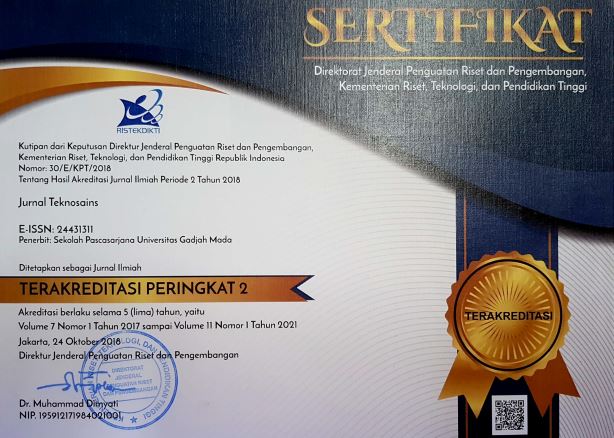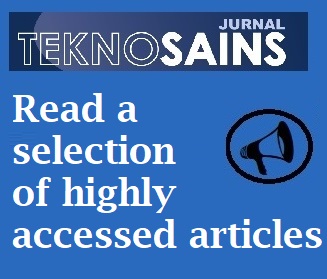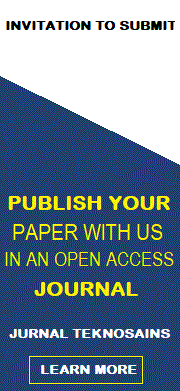Impacts of temperature and coating pigment ratios on the corrosion rate of ss400 steel
Untung Budiarto(1), Ahmad Firdhaus(2*), Muhammad Luqman Hakim(3), Tuswan Tuswan(4), Fauzan Ammar Fata Yusuf(5)
(1) Department of Naval Architecture, Diponegoro University
(2) Department of Naval Architecture, Diponegoro University
(3) Department of Naval Architecture, Diponegoro University
(4) Department of Naval Architecture, Diponegoro University
(5) Department of Naval Architecture, Diponegoro University
(*) Corresponding Author
Abstract
Steel is the primary shipbuilding material; however, it erodes quickly. Adequate protection requires hard, durable, and adhesive coatings. This study examines how aluminium-graphite pigment and heat treatment affect epoxy-coated SS400 steel plate corrosion, adhesion, and coating resilience. This study used a 1:1 and 3:1 pigment ratio with 100°C and 150°C heat treatment. The coating layer was 250 μm thick and comprised 80% epoxy and 20% aluminum-graphite. The maximum adhesion strength, 19.62 MPa, was achieved with an aluminium-graphite pigment ratio of 1:1 and 100°C heat treatment. The top coating resistance was 6.86 Joules under identical conditions. The lowest corrosion rate, 0.047 mmpy, was at a 3:1 aluminum-graphite ratio and 150°C heat treatment. This discovery has significant consequences for shipbuilding steel corrosion resistance.
Keywords
Full Text:
PDFReferences
[1] Meng, Q., Frankel, G. S., Colijn, H. O. & Goss, S. H. 2003. Stainless-steel corrosion and MnS inclusions. Nature. Vol. 424, no. 6947, pp. 389–390, doi: 10.1038/424389b.
[2] Fontana, M. G. 1954. Huey Test for Stainless Steels Corrosion. Journal of Industrial and Engineering Chemistry. Vol. 46, no. 10, pp. 93A-96A, Oct. 1954, doi: 10.1021/ie50538a010.
[3] Fontana, M. G. & Greene, N. D. 1978. Corrosion engineering / Mars G. Fontana, Norbert D. Greene. in McGraw-Hill series in materials science and engineering. New York: McGraw-Hill.
[4] Lin, J. & Dahan, I. 2015. Nanostructured chromium coatings with enhanced mechanical properties and corrosion resistance. Surface and Coating Technology. Vol. 265, pp. 154–159, doi: https://doi.org/10.1016/j.surfcoat.2015.01.046.
[5] Gray, J. E. & Luan, B. 2002. Protective coatings on magnesium and its alloys — a critical review. Journal of Alloys and Compound. Vol. 336, no. 1, pp. 88–113, doi: https://doi.org/10.1016/S0925-8388(01)01899-0.
[6] Pratikno, H., Febrianto, A. & Lalitya Dhanista, W. 2020. The Effect Analysis of Coating Thickness Variation and Mixed Composition of Zinc-Graphite on Epoxy Coating with Steel Plate ASTM A36. International Journal of Offshore and Coastal Engineering. Vol. 4, no. 1, pp. 42–47.
[7] Croll, S. G. 2020. Surface roughness profile and its effect on coating adhesion and corrosion protection: A review. Progress in Organic Coatings Journal. Vol. 148, p. 105847, doi: https://doi.org/10.1016/j.porgcoat.2020.105847.
[8] Pratikno, H., Hapsari, F. W., & Lalitya Dhanista, W. 2021. Analysis of the Effect of Abrasive Material and Polyurethane Coating Thickness Variations on ASTM A36 Steel Towards Corrosion Rate in Sea Water Environment. International Journal of Offshore and Coastal Engineering. Vol. 5, no. 1, pp. 10–17.
[9] Pratikno, H., Satriya, B. W., & Sholihin, 2020. Analysis of Influence of Abrasive Material Variation and Spray Pressure Variation in Coating Epoxy of ASTM A36 Steel Toward Impact Resistance and Corrosion Rate. International Journal of Offshore and Coastal Engineering. Vol. 4, no. 2, pp. 57–64.
[10] González, S., Mirza Rosca, I. C., & Souto, R. M. 2001. Investigation of the corrosion resistance characteristics of pigments in alkyd coatings on steel. Progress in Organic Coatings Journal. Vol. 43, no. 4, pp. 282–285, doi: https://doi.org/10.1016/S0300-9440(01)00210-7.
[11] Marchebois, H., Touzain, S., Joiret, S., Bernard, J., & Savall, C. 2002. Zinc-rich powder coatings corrosion in sea water: influence of conductive pigments. Progress in Organic Coatings Journal. Vol. 45, no. 4, pp. 415–421, doi: https://doi.org/10.1016/S0300-9440(02)00145-5.
[12] Ashassi-Sorkhabi, H. & Rafizadeh, S. H. 2004. Effect of coating time and heat treatment on structures and corrosion characteristics of electroless Ni–P alloy deposits. Surface and Coating Technology. Vol. 176, no. 3, pp. 318–326, doi: https://doi.org/10.1016/S0257-8972(03)00746-1.
[13] Raghu Ram Mohan Reddy, K., Ramanaiah, N., & Sarcar, M. M. M. 2017. Effect of heat treatment on corrosion behavior of duplex coatings. Journal of King Saud University - Engineering Sciences. Vol. 29, no. 1, pp. 84–90, doi: https://doi.org/10.1016/j.jksues.2014.08.002.
[14] Bigdeli, F. & Allahkaram, S. R. 2009. An investigation on corrosion resistance of as-applied and heat treated Ni–P/nanoSiC coatings. Journal of Materials & Design. Vol. 30, no. 10, pp. 4450–4453, doi: https://doi.org/10.1016/j.matdes.2009.04.020.
[15] Ali, M. S., Pratikno, H. & Dhanistha, W. L. 2019. Analisa Pengaruh Variasi Sudut Blasting dengan Coating Campuran Epoxy dan Aluminium Serbuk terhadap Kekuatan Adhesi, Prediksi Laju Korosi, dan Morfologi pada Plat Baja ASTM A36. Jurnal Teknik ITS. Vol. 8, no. 1.
[16] Supriyono, M. T. & Miftahuddin, M. 2019. Analisis Pengaruh Suhu Pengovenan Terhadap Daya Rekat Dan Kekuatan Lapisan Pada Pengecatan Serbuk. Presisi. Vol. 21, no. 2, pp. 77–87.
[17] International Organization for Standardization. 2012. ISO 8501 - Visual assessment of surface cleanliness.
[18] International Organization for Standardization. 2012. ISO 8503 - Surface roughness characteristics of blast-cleaned steel substrates.
[19] Biro Klasifikasi Indonesia. 2022. Rules for Hull.
[20] ASTM International. 1996. ASTM D 4414-95: Standard Practice for Measurement of Wet Film Thickness by Notch Gages 1. [Online]. Available: www.astm.org
[21] ASTM International. 2001. ASTM D 4138 - 94: Standard Test Methods for Measurement of Dry Film Thickness of Protective Coating Systems by Destructive Means 1.
[22] ASTM International. 2002. ASTM D 4541 - 02: Standard Test Method for Pull-Off Strength of Coatings Using Portable Adhesion Testers.
[23] Griffiths, G. Pull-Off Test. Degradation & Surface Engineering. Accessed: Sep. 10, 2023. [Online]. Available: https://twgg.wordpress.com/2014/12/15/pull-off-tests/
[24] ASTM International. 2019. ASTM D 2794 - 93: Standard Test Method for Resistance of Organic Coatings to the Effects of Rapid Deformation (Impact).
[25] ASTM International. 2015. ASTM G 102 - 89: Standard Practice for Calculation of Corrosion Rates and Related Information from Electrochemical Measurements 1. doi: 10.1520/G0102-89R15E01.
[26] Beake, B. D. 2022. Nano- and Micro-Scale Impact Testing of Hard Coatings: A Review. Coatings. Vol. 12, no. 6, doi: 10.3390/coatings12060793.
[27] Atmaji, D. P. 2016. Effect of Protection Voltage and Thickness of Paint on Adhesive Strength and Permeabilitiy of Coating in Cathodic Disbonding Test in API5L Grade B Steel at Marine Environment. Tugas Akhir. Institut Teknologi Sepuluh Nopember, Surabaya.
[28] Wei, P. & Wan, X. R. 2000. The effect of a coating heat-treatment on Cr–Si and heat-treatment on the mechanical properties of Cr17Ni2 stainless steel. Surface and Coating Technology. Vol. 132, no. 2, pp. 137–142, doi: https://doi.org/10.1016/S0257-8972(00)00716-7.
[29] Debrita, C. 2017. Analysis of Variation of Coating Method Effect on ASTM A36 Steel Platform Towrads Prediction of Corrosion Rate, Adhesion Strength, and Impact Resistance. Tugas Akhir. Institut Teknologi Sepuluh Nopember, Surabaya.
[30] Olad, A., Barati, M., & Behboudi, S. 2012. Preparation of PANI/epoxy/Zn nanocomposite using Zn nanoparticles and epoxy resin as additives and investigation of its corrosion protection behavior on iron. Progress in Organic Coatings Journal. Vol. 74, no. 1, pp. 221–227, doi: https://doi.org/10.1016/j.porgcoat.2011.12.012.
[31] Wiering, L., Qi, X., & Battocchi, D. 2021. Corrosion performance of high-temperature organic coatings subjected to heat treatments. Progress in Organic Coatings Journal. Vol. 159, p. 106418, doi: https://doi.org/10.1016/j.porgcoat.2021.106418.
Article Metrics
Refbacks
- There are currently no refbacks.
Copyright (c) 2024 Untung Budiarto et al.

This work is licensed under a Creative Commons Attribution-ShareAlike 4.0 International License.
Copyright © 2024 Jurnal Teknosains Submit an Article Tracking Your Submission
Editorial Policies Publishing System Copyright Notice Site Map Journal History Visitor Statistics Abstracting & Indexing










